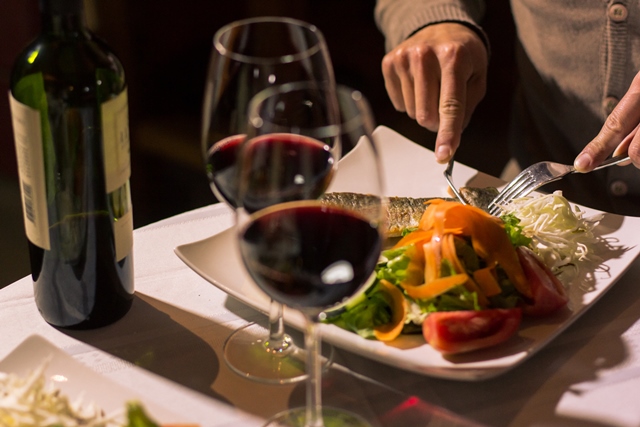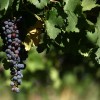Today, and increasingly, we are seeing a quest for the perfect marriage of food and wine. However, I always say that making a well balanced pairing is an art! This is because there is no clear rule to hit 100% all the time. There are some important things you need to consider so that the end result is good. Also, there is no 100% guarantee of success in all cases, when there are so many variables and, above all, what counts is the personal taste of each person. So I don’t think the perfect pairing exists for everyone. But there is a perfect combination, according to taste.
For starters, the most basic principle of all: A well done marriage is one where, in the end, none of the elements (wine or food) is too stressed, leaving the other “off” or lost on the palate. It is literally a harmony, a balance.
And how do you get this harmony? It’s not easy, but there are some tips you can follow to achieve this.
One point to consider is the BODY / DENSITY of the wine and the food. This is perhaps the first and most important factor to be considered. Everyone, at some time, has heard “red with meat” and “white with fish”. This is basic, which often works, but we need to keep in mind that what counts is the body of the wine, not the color. For example, a full-bodied Chardonnay with oak could go better with a steak than a young Pinot Noir, which is a light red. And a light red could go better with fish and seafood than a full-bodied white. But it is also essential to remember the sauce and/or the accompaniments! They can make a difference. At this point, you have to give special attention to fats: high fat foods deserve special attention, as they may not work with very tannic wines.
We must also pay attention to AROMATIC INTENSITY / TASTE. We should avoid delicate / low aromatic wines with very aromatic foods. And vice-versa. After all, if the food is more aromatic than the wine, the wine “disappears”. The opposite is also true. The way food is prepared, and the seasoning and ingredients used can tell a lot about aromatic intensity, even before trying it.
ACIDITY is another important factor that can certainly harm both the dish and the wine. It is always necessary to be careful with high acidity dishes, because they will rob the wine of its acidity, leaving it “flat” and without grace. Highly acidic wines with dishes without acidity, will leave the combination unbalanced. Therefore, by eating meals that have a lot of lemon, vinegar, balsamic vinegar and tomato, always choose wines with higher acidity.
And what about SWEET and SALTY? Always remember that sweet dishes leave wines even drier with more acidic and unbalanced sensations. So for sweet dishes choose sweet wines. The sweeter the dish, the sweeter the wine should be. But beware of chocolate based desserts. In these cases, always opt for fortified or sweet wines, which fit like a glove!
And salt! This is the No.1 enemy of tannins. So avoid having very salty dishes with very tannic wines, as this combination creates a very unpleasant feeling of bitterness!
Or you can opt for the marriage by contrast, which may result in a delicious experience.
Who has already tried the classic combination of sweet wine (late harvest or others) with blue cheeses, which are well salted, like “Sauternes-Roquefort”! And there is an explanation: the sweet accentuates the salty on the palate and gives these pairings a more intense contrast.
As you may have noticed, this “art” is complex and deserves careful attention. However, nothing beats good old fashioned trial and error. Only by trying, getting it right and being wrong will we discover which combinations work. And that way, we’ll never forget!




Good post. I learn something totally new and challenging on sites I
stumbleupon on a daily basis. It’s always useful to read through articles
from other writers and practice a little something from
their web sites.